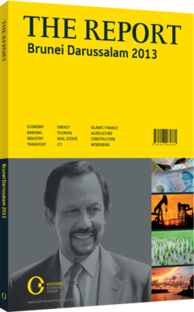OBG talks to Cham Prasidh, Cambodian Senior Minister and Minister of Commerce

Interview: Cham Prasidh
What action items were identified by the ASEAN Economic Ministers (AEM) at their meeting in Siem Reap to ensure implementation of the ASEAN Economic Community (AEC) Blueprint by 2015?
CHAM PRASIDH: So far, we have made great strides towards the realisation of the AEC Blueprint by 2015. This is reflected by a number of measures during various phases. In the first stage, from January 2008 to December 2009, 105 measures were to be implemented. Since the last reporting period in April 2012, the implementation rate increased slightly from 86.7% to 87.6% with the entry into force of the ASEAN Comprehensive Investment Agreement (ACIA) on March 29, 2012. In total, 92 measures out of 105 had already been completed.
In terms of action items, we emphasised a commitment to ensuring free flow of services by 2015, and senior officials were tasked with liberalising the remaining service subsectors through the Ninth and 10th ASEAN Framework Agreement on Services (AFAS) by 2013 and 2015, respectively. On investment, the ministers noted that ASEAN has intensified projects to promote and facilitate the region as a single investment area following the entry into force of the ACIA on March 29, 2012. On small and medium-sized enterprises (SMEs), member states agreed that SME development must be a priority for the AEC in order to reach its goals by 2015 and to narrow development gaps.
What progress has been made in reducing non-tariff barriers (NTBs) among ASEAN members?
CHAM: The ASEAN has a strong stance on this. I see much progress being made to address NTBs. For instance, several initiatives have been undertaken to address obstacles, which include enhancing the ASEAN Non-Tariff Measures Database by adopting the new classification set out by the World Bank and UN Conference on Trade and Development. We are also engaging with the private sector to gather feedback on how to address trade impediments and to generate discussion of non-tariff measures with reported NTB effects.
How far has ASEAN gone in implementing the AFAS and what measures are pending for further liberalisation of trade services?
CHAM: Substantial progress has been made in the area of services. The signing of the ASEAN Agreement on Movement of Natural Persons during the 21st ASEAN Summit in November 2012 is key to this, as the agreement will facilitate the movement of people engaging in trade of goods and services as well as investment in the region. We are also in the process of implementing an ASEAN Services Work programme by 2015, which provides clear milestones and timelines for various initiatives to guarantee a free flow of services. Furthermore, we are working on enhancing the AFAS based on approved objectives and principles, which will first be implemented in 2012 and be completed by 2015.
Nevertheless, further liberalisation is quite a difficult exercise as domestic regulations continue to create hurdles. In my view, the way to address these obstacles is for ASEAN member states to focus on regulatory reform. To this end, the political commitment of ASEAN leaders would be an effective tool. Other factors that can’t be ignored are support for capacity building and outreach programmes.
Mid-term review of the AEC Blueprint found weak coordination and lack of follow through. What measures are being taken to address these issues?
CHAM: For me, it is not unusual as cooperation will always be a problem when a policy involves various agencies on different levels. This is the case when it comes to the AEC Blueprint, which demands a high degree of coordination both within a particular agency and between agencies in one country, let alone within the ASEAN as a whole. First and foremost, political will among leaders is indispensable. The blueprint should be prioritised by all governments involved when it comes to member states’ agendas. This commitment should be followed by clear messages regarding the goals of the blueprint and the timeline for realising it.
You have reached the limit of premium articles you can view for free.
Choose from the options below to purchase print or digital editions of our Reports. You can also purchase a website subscription giving you unlimited access to all of our Reports online for 12 months.
If you have already purchased this Report or have a website subscription, please login to continue.

